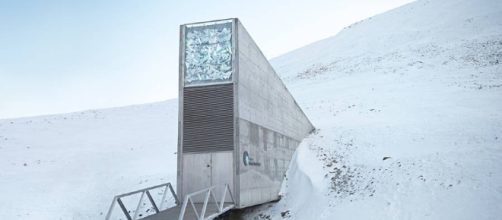Since the year of 2000, we have heard stories related to “End of the World”. But no official announcement came from any of the world governments, instead, there are indirect proclamations like global warming, depletion of the ozone layer, drastic climatic changes which imply some message to the world people. So when the world ends? There will be food famine and the people who survived the impact will starve for food. Where will the survivors develop their generation?
Svalbard Global Seed Vault
To answer those queries, Svalbard Global Seed Vault was constructed in 2008 on the Norwegian island of Spitsbergen.The seed vault contains almost a million samples of food-crop seeds from across the world so that it could help humankind regenerate crops after a doomsday.
There is also an important reason, why this building is located in the Svalbard archipelago, halfway between mainland Norway and the North Pole?
This location was chosen due to the region’s geological stability, low humidity, and freezing temperatures. The vault is also buried over 100 meters into the side of a mountain, which is layered by PermaFrost. This PermaFrost is also referred as “permanently frozen snow soil” that maintains the temperature of 18 degree Celsius, which is required for optimum preservation of the seeds.
“Failsafe” Artic Seed Vault?
As reported by The Guardian, The Global Seed Vault in Svalbard, Norway was designed to be an impregnable Arctic stronghold that would safeguard plant genealogy for the future.
And the operators of the Global Seed Vault claim on their website, “It is a failsafe seed storage facility, built to stand the test of time – and the challenge of natural or man-made disasters”.
But a few days back, rising temperatures have led to melting permafrost and heavy rain caused flooding in the entryway. Water gushed 15 meters into the front portion of the tunnel where it then froze, according to CNN. The seeds were not affected by this scenario and the safety precautions are taken in the facility. The managers of the vault are keenly monitoring the facility 24 hours a day in order to minimize the risks.
As an alternative, entrance tunnel that slopes upwards rather than downwards could be a better solution to safeguard the future of the seed vault.
By doing so the water can run out by not affecting the seed bank. Here the point to note is, whether the melting of Artic permanent snowballs is a signal for the destruction of the world? Whether we need to concentrate on the changing climatic conditions?


